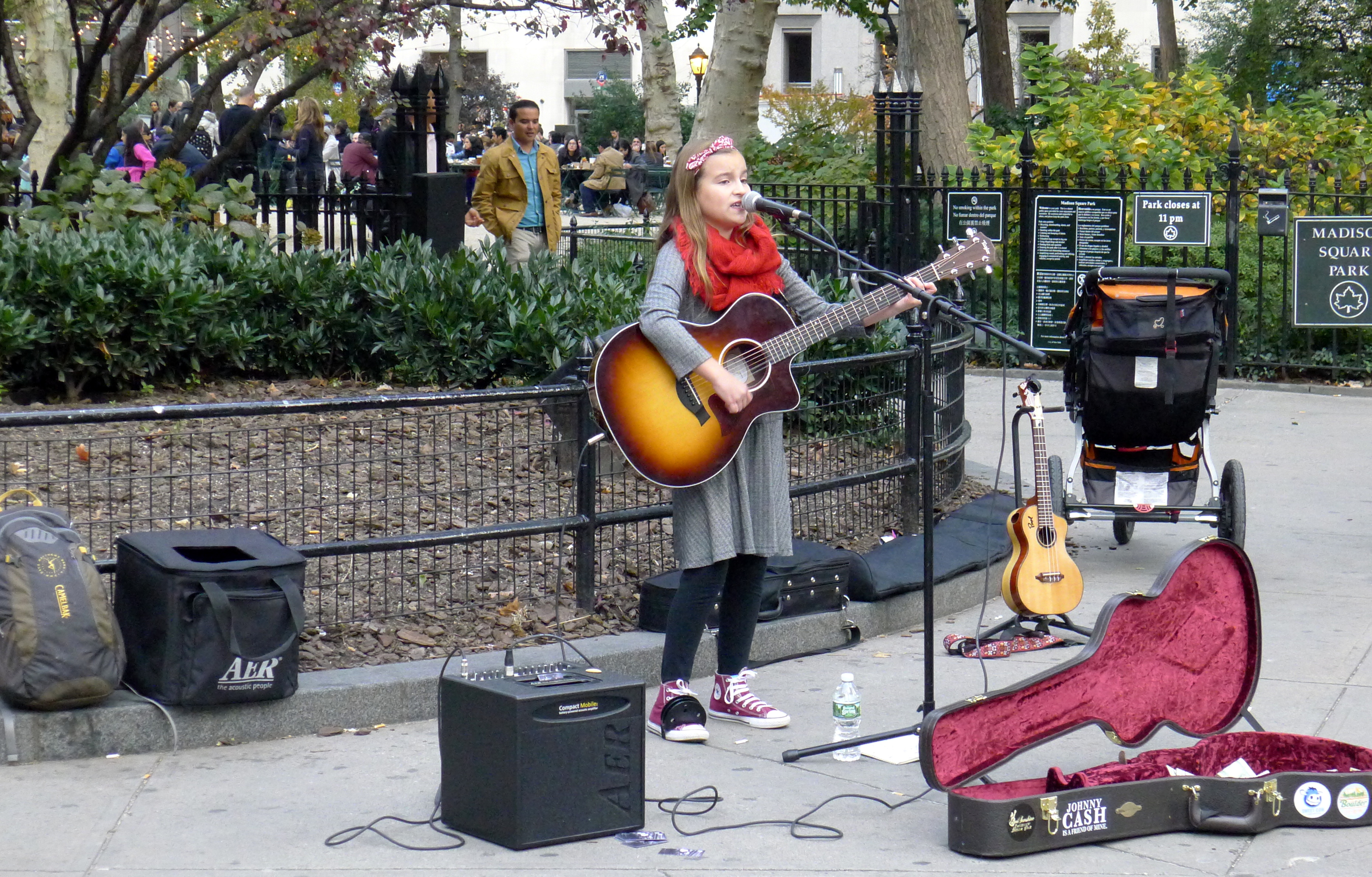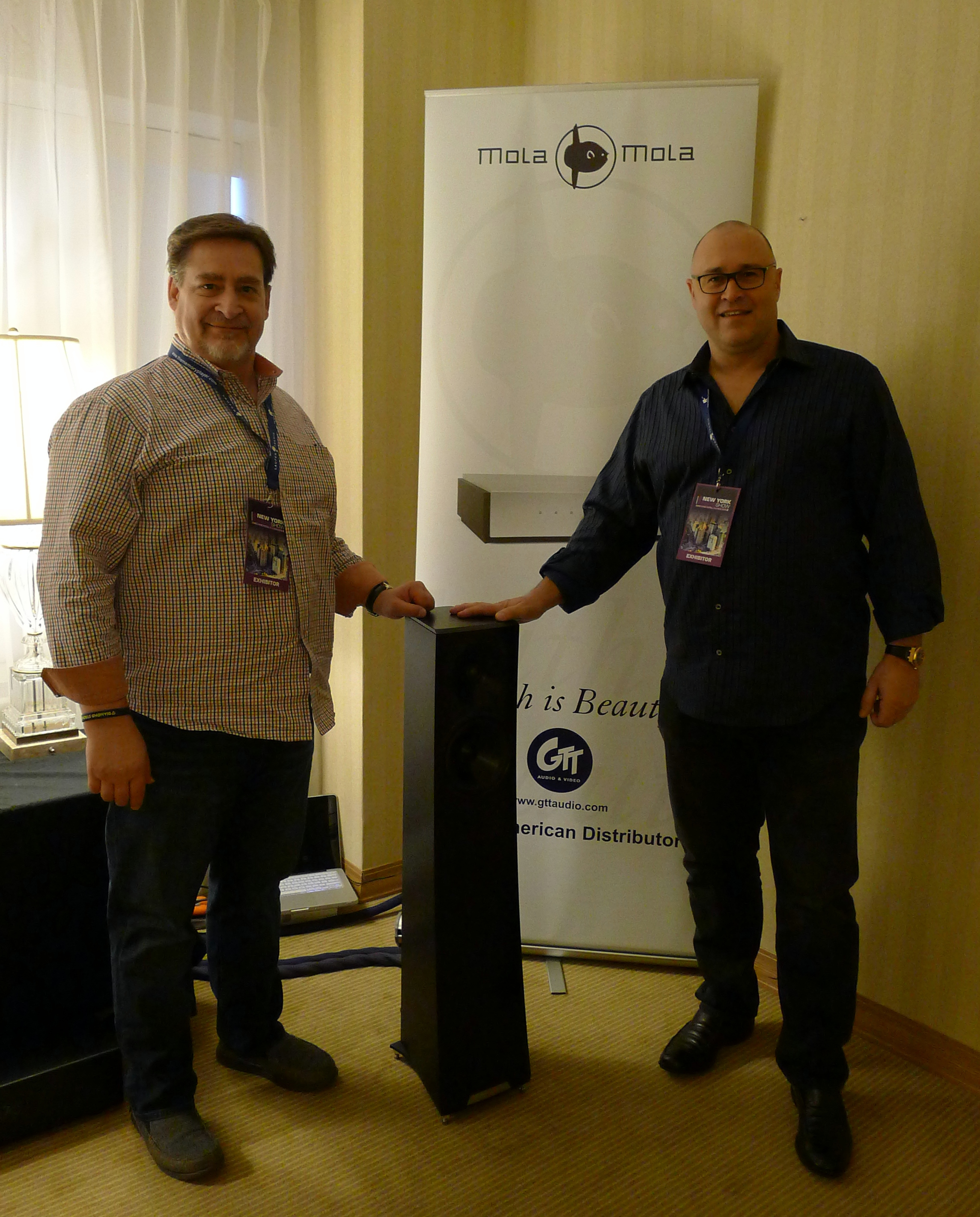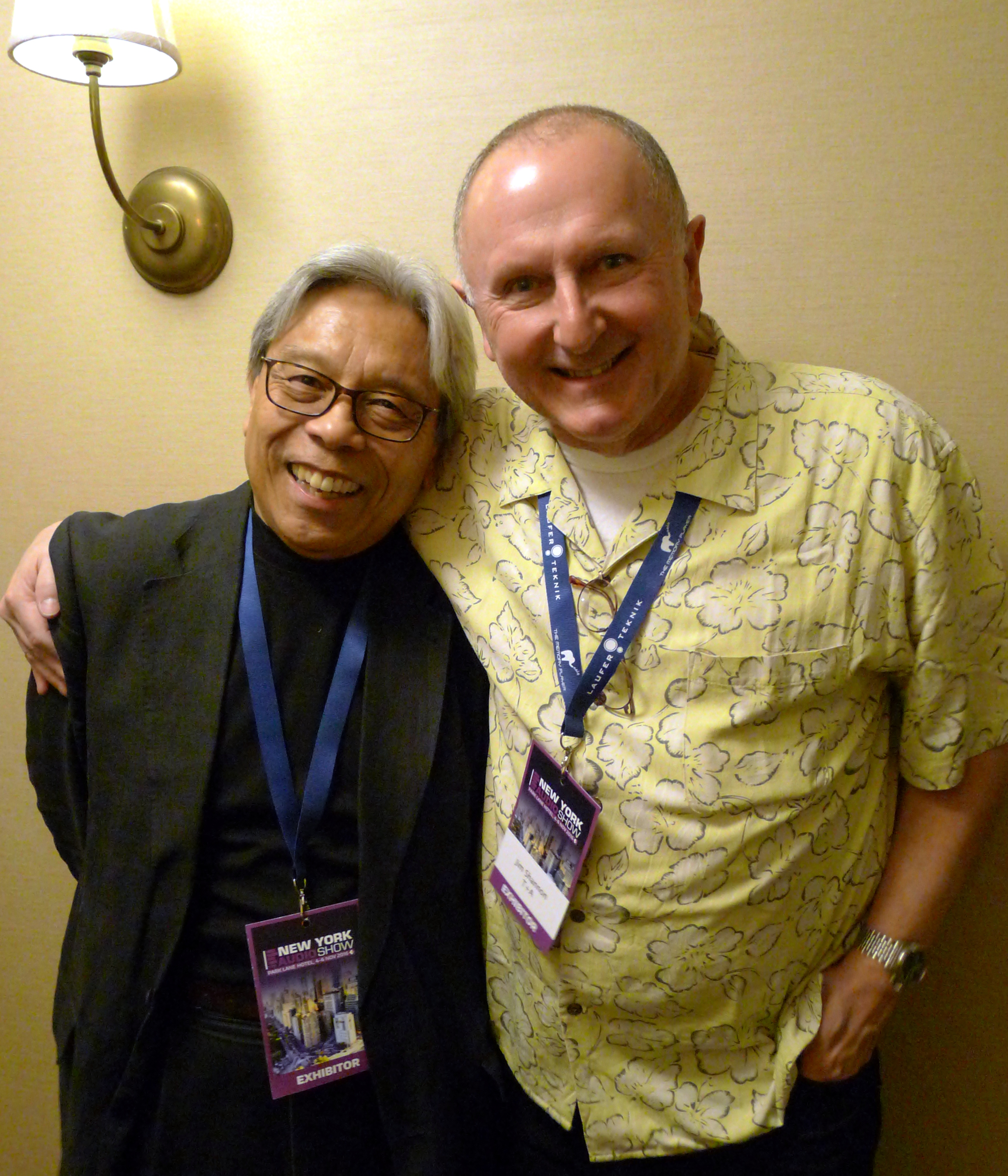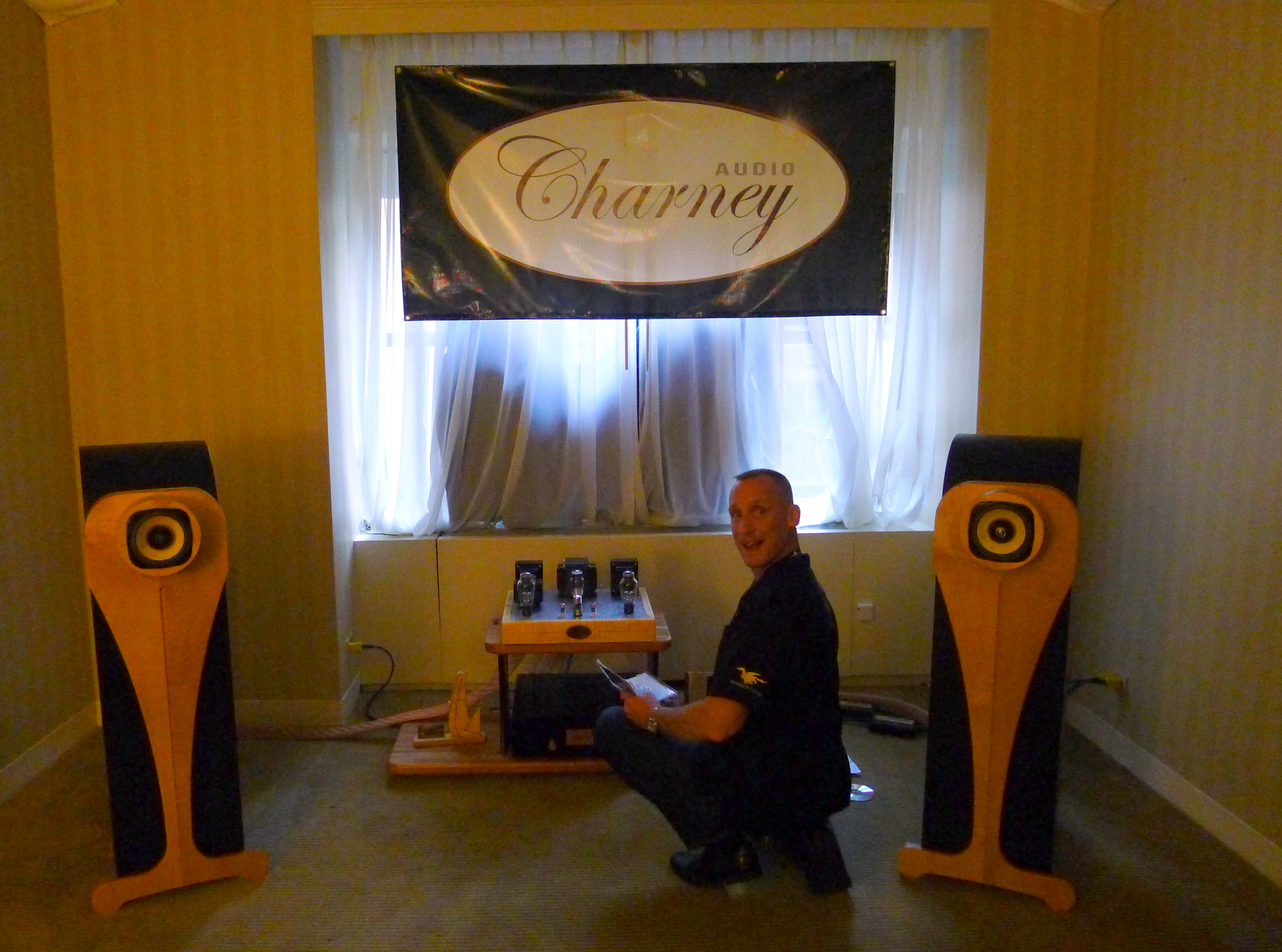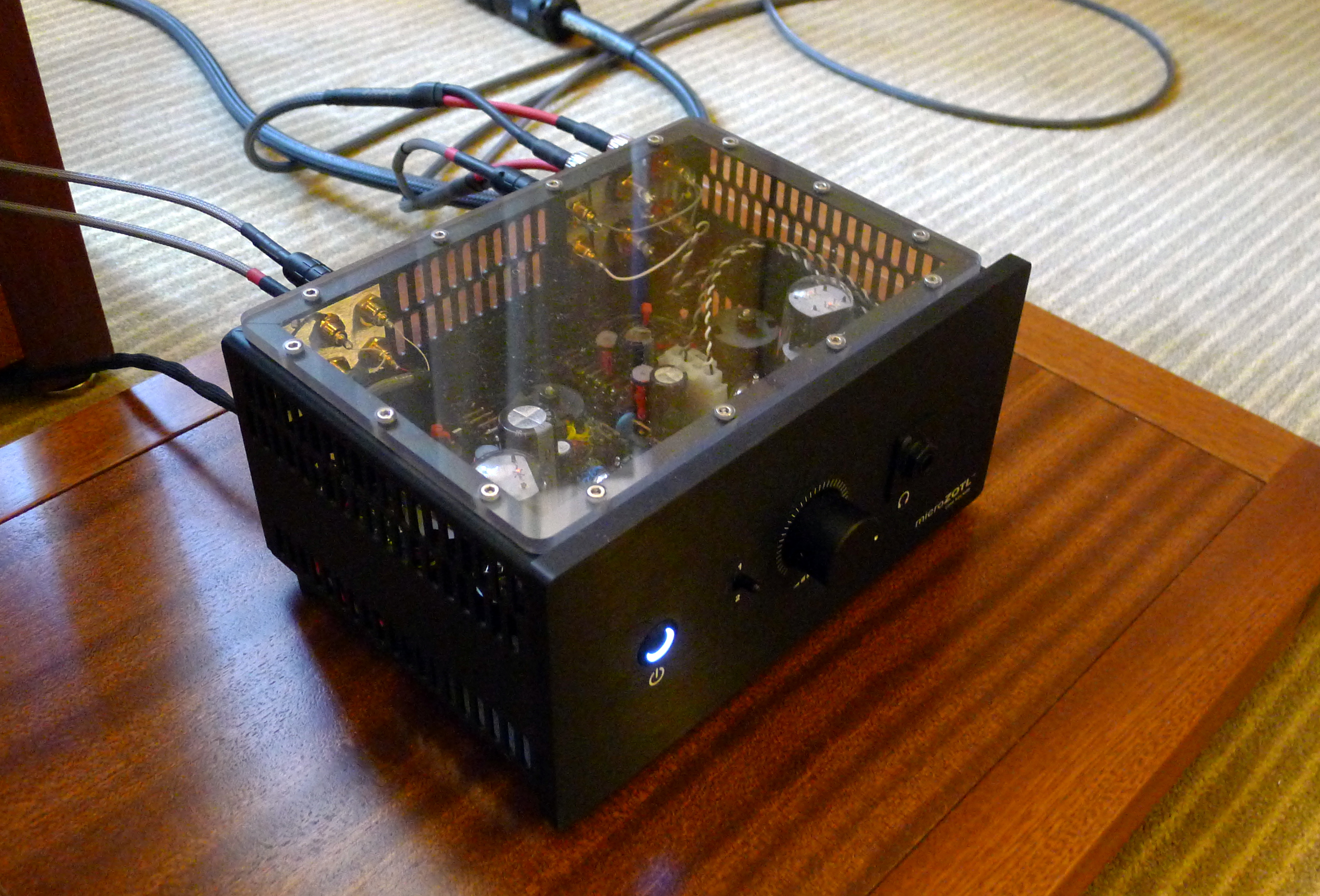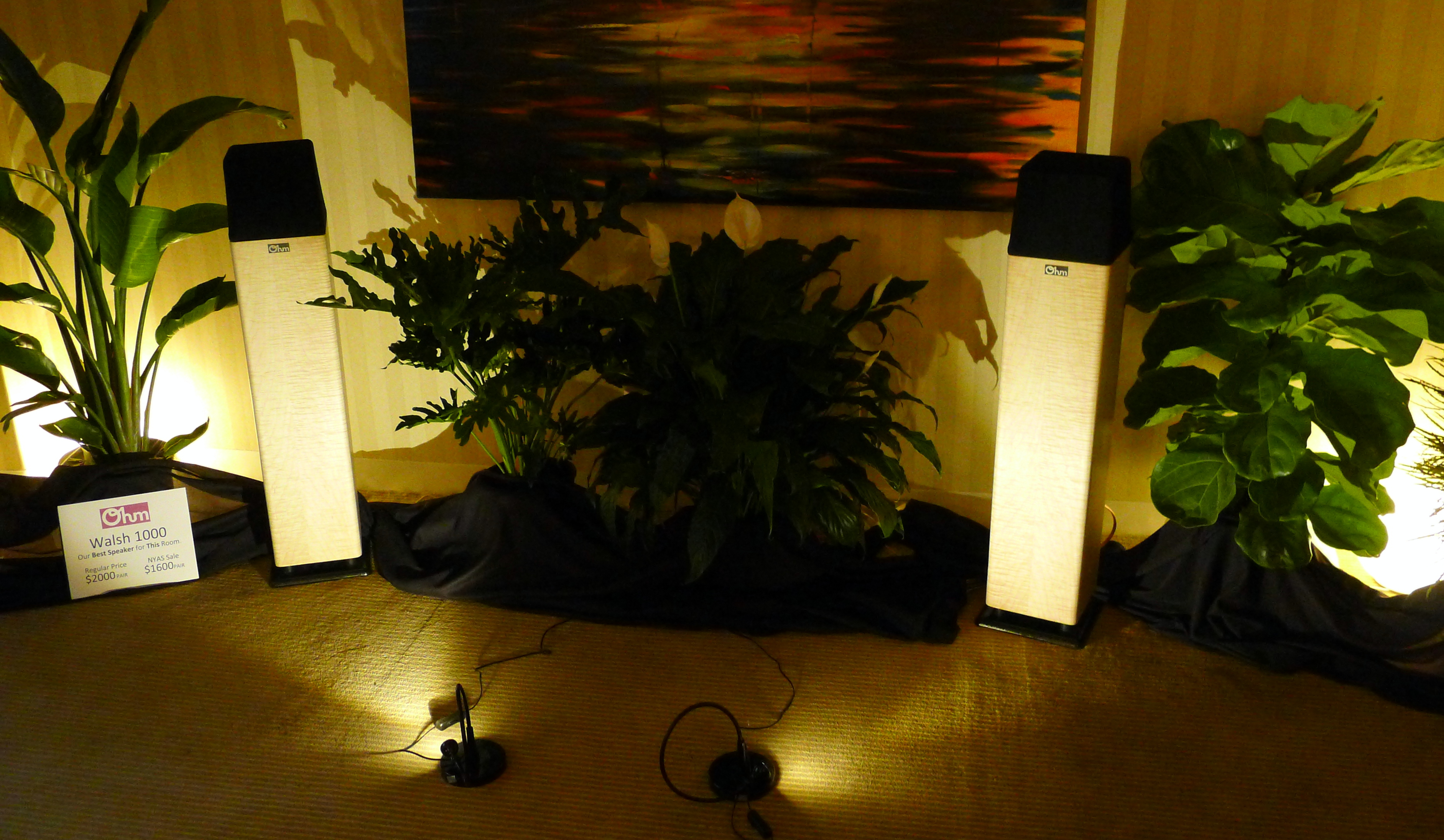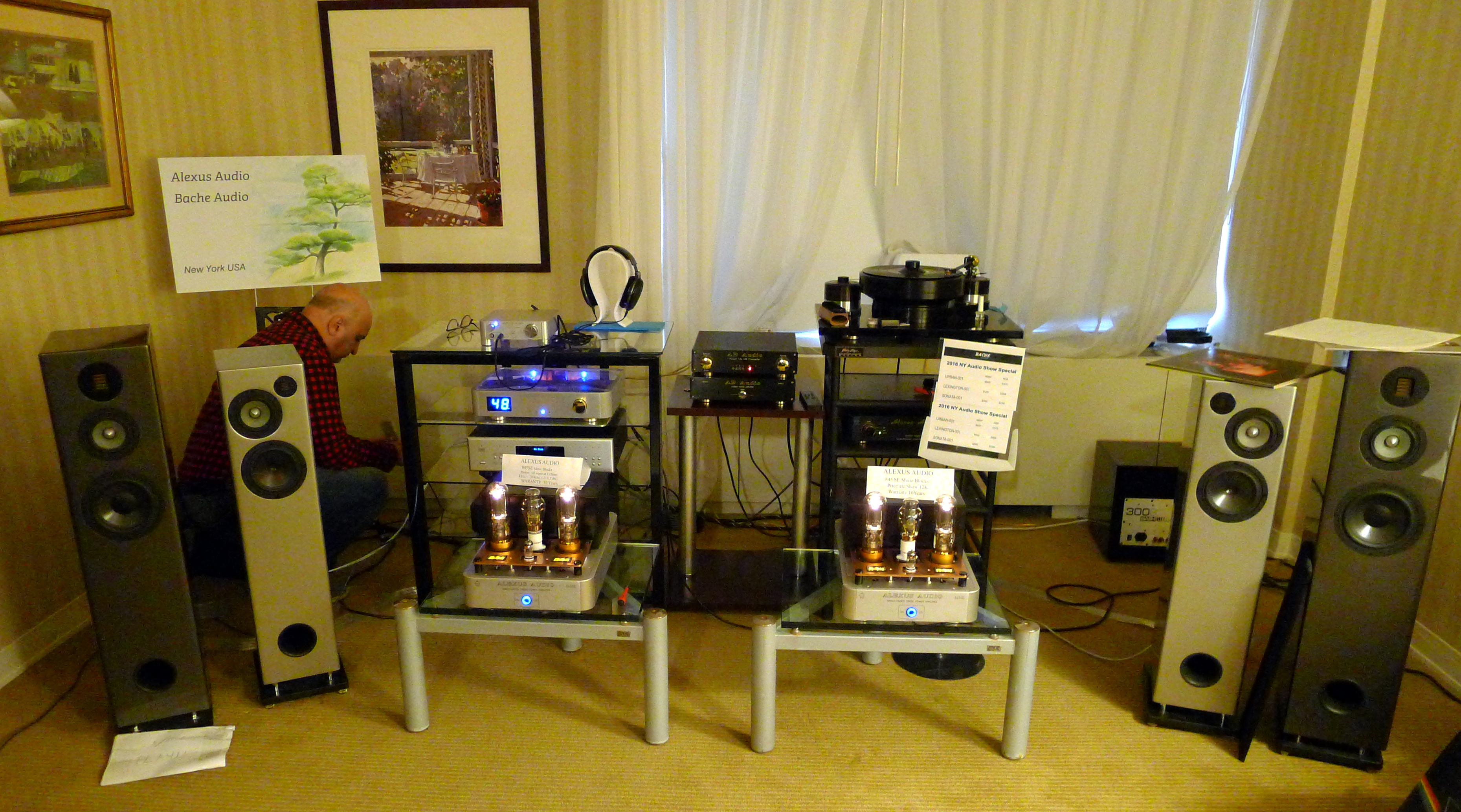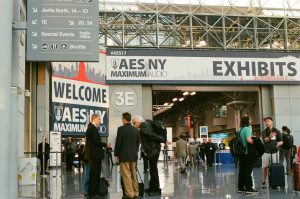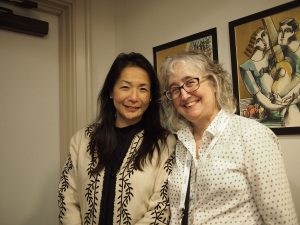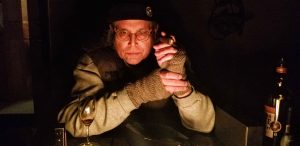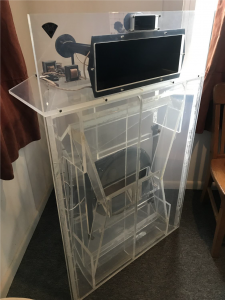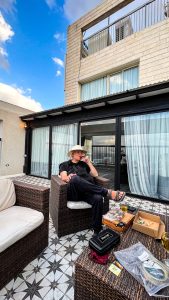If you find yourself in the Big Apple, you are likely to encounter street musicians. Of course, their quality varies: some are quite good, others not quite ready, while some shouldn't be out in public. I guess it's like that for most of our endeavors.
Welcome to the New York Audio Show 2016, held at the upscale Park Lane Hotel fronting Central Park South.
Trends come and go, but I never expected to see this one return. Music servers were everywhere—check. Turntables were in maybe half the rooms—check. CD players were in a handful—check. The eye opener was the prevalence of flea-watt SET amps and high efficiency speakers. Since when did this become so popular? Last I looked, the trend was high powered solid-state amps with inefficient speakers and the buzzword heard most often was neutrality.
These are the rooms I visited in the approximate order I saw them.
Bill Parish and the Kii speaker
GTT Audio room 1
Kii, Total DAC Streamer, K-S Elation! Ethernet cable
This display was a bit of a shocker. You walk in, spy a pair of monitor speakers, note the empty space between them, and then wonder where the rest of the system is hiding. Everything is contained in the speaker cabinets; the only piece not included is the source component.
The Kii Three ($13,900; optional stands add $1250) sounded a little shelved down at first. No problem—since each speaker has a 16 band equalizer on the rear, one of the guys simply reset it. Then we heard soprano Anna Netrebko really sparkle.
"Are there sub-woofers in here?" was the next question. These babies were full range and super dynamic—and no wonder. There are 6 Ncore Class D monoblocks in each speaker, delivering 1500 watts/channel.
Mola-Mola Makua Linestage & Kaluga Mono Amps
Dick Diamond (YG Acoustics) and Bill Parish
GTT Audio, room 2
Mola-Mola, K-S Emotion, YG Acoustics
We played the same Anna Netrebko track in GTT's adjacent room with the petite YG Carmel 2 ($24,300) driven by Mola-Mola gear (Makua Linestage $11,740; Kaluga Mono Amps $16,500/pair), which offered a fresh, natural perspective. The soprano's image was in correct proportion and scale to the orchestra. Another track featuring Ben Webster's tenor sax sounded chewy and delicious.
Axiss Audio
Soulution, Magico, Accuphase, Critical Mass Systems
I have never been a fan of Magico speakers, but I have to admit, this time I was taken by them. And it was the entry level Magico S1 speakers that did it.
Arturo Manzano (Axiss) and James Shannon (T+A)
Paired with a luxe Soulution electronics stack sitting on the Critical Mass Systems rack, the sound was highly controlled, if a tad midrangy. (The reduced highs and resultant midrangy tonal balance would prove to be the case in many rooms.) This odd couple expensive Soulution electronics driving the affordable Magicos sounded sophisticated. A lot of finesse was evident.
As it turned out, the three rooms mentioned above were among the standouts of the show.
Charney Audio
Every piece of gear in this room except the Jena Labs wires was designed and manufactured by Brian Charney. His Companion speakers ($5850) utilize a single Lowther DX56 driver.
Mr. Charney is a skillful woodworker with a highly developed aesthetic. While I wouldn't describe them as elegant, these objects look like works of art, especially the electronics, and they are certainly beautiful to behold.
Audio Doctor
T+A, Paradigm
Audio Doctor had an impressive array of gear including more room acoustic treatments in evidence than anywhere else.
The Paradigm speakers were very widely separated and the listener was seated near field, yielding a big, immersive, full-range soundfield. The T+A electronics stack sounded very good.
Sadurni Acoustics Horns
The MZ2-S ZOTL mono amplifier
Linear Tube Audio
Wolf Audio Systems, Veracity Audio, Linear Tube Audio, Sadurni Acoustics, Audience Cables, Box Furniture
The 108dB efficient Sadurni Acoustics horns ($22K) were paired with the mighty mite 1 watt/channel Linear Tube Audio MZ2-S monoblocks ($1845). And the dynamics were startling! You could feel the horns pressurize the room even at low-volume levels.
Audio Note UK
(Sorry for the poor lighting/underexposed photo.)
Woodbridge Stereo
Martin Logan, VPI, Tara Labs, Mark Levinson
I poked my head in the door and was stopped in my tracks. The sheer presence of the sound pulled me in.
The Martin Logan Renaissance speakers ($25K) use electrostatic transducers on top and a powered sub for the bottom. There are two 12" powered woofers in each cabinet.
I was quite surprised to learn the crossover cutoff frequency was 300Hz, well into the midband. Could you hear the different drivers? Yes. While the blend was skillfully done—the two types of drivers were equally fast and the tonal balance was dense and rich, that's saying something—but there was a difference in presence. The transparency and openness on top was not matched below.
Prism Sound
Ohm Acoustics
In my formative years I was the proud owner of a pair of Ohm speakers—and very fond of them, too, with their unique Walsh mid/treble driver. They didn't sound like anything else. I thought the manufacturer had gone under decades ago, but apparently they've just been keeping a low profile as far as the audiophile market.
The designs of the late, great, Lincoln Walsh are still alive!
Bache Audio / Alexis Audio
Volti Audio / Vinnie Rossi Audio / Fidelis AV
The Art of Sound
Naim, Pro-ject, Sonus faber, Merrill Audio, Primare, EAT
Wes Bender Studio
GamuT, Stillpoints,Pear Audio Blue
Wes Bender is a high-spirited kind of guy who always makes me laugh. You can count on him for good vibes and a quality demo.
This room was another case of a smallish stand-mounted speaker defying the laws of physics. The GamuT RS3i ($20,990) speaker powered by their D3i dual-mono preamp ($8380), D200i dual-mono stereo amplifier ($13,990), and CD3 CD player ($7990), along with GamuT Reference series cabling, went so deep and had such power, I had to ask twice, was there a sub in the room? They spec down to 34Hz. Orchestral music was well served from the Pear Audio Blue analog front-end (Kid Thomas turntable and arm $7995; Blue Classic phonostage $1995 and external power supply $1995).
Robyatt Audio
Oswald's Mill Audio, Tektron-Italia, Grant Fidelity
Adirondack Audio & Video
Plinius Audio, Hegel, Triangle, Soulines
Sound By Singer, Ltd
Acoustic Signature, Chord Electronics, Harbeth, Valve Amplification Company, Aurender
Snap! The tubed VAC Signature 200 iQ power amp ($14,000) and Master Preamplifier ($27,000, additional $13,000 for the phono-stage option) electronics driving the Harbeth Reference Monitor 40.2 speakers ($14,795) were all about tone and played really fast; transients were flying. Kevin Hayes of VAC acted as master of ceremonies when I was there. For the price, I thought this room offered good value.
Hallways and rooms were crowded on Saturday
A view of the retail floor
Marathon Sunday
Wrapping Up
Public attendance appeared quite heavy on Saturday. I couldn't get into several of my top rooms. I heard Friday was also good. This year's show had about 30 rooms and the vibes were more positive than last year.
There's always something going on in the Big Apple. Closing day of NYAS 2016 coincided with the NYC Marathon, and—you guessed it—the route to the finish line passed right outside the hotel. I made an early departure in order to sidestep the throngs.




